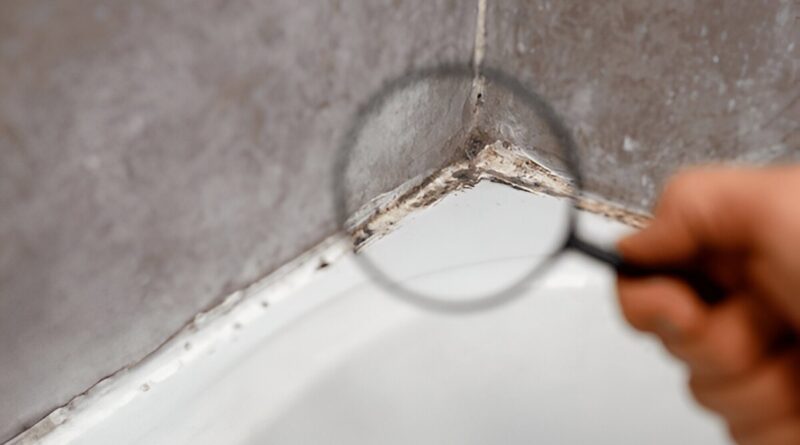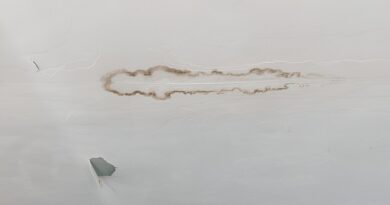Air Sampling vs. Surface Sampling in Elizabeth, NJ: Which Is Right for Your Home?
When it comes to protecting your Elizabeth, New Jersey home from potential contaminants, environmental testing plays a crucial role in identifying hidden threats. Two of the most common testing methodologies—air sampling and Surface Sampling in Elizabeth NJ—serve different purposes and provide distinct insights into your home’s environmental condition. Understanding the differences, advantages, and limitations of each approach is essential for making informed decisions about which testing strategy best addresses your specific concerns. This comprehensive comparison will help Elizabeth homeowners determine which sampling method is right for their unique situation.
Understanding the Fundamentals: How Each Method Works
Before comparing applications, it’s important to understand the basic mechanics of each testing approach:
Air Sampling Methodology
Air sampling captures what’s actively circulating in your indoor environment through several collection methods:
Non-Viable Sampling: Collects airborne particles on specialized cassettes or slides, typically using calibrated pumps that draw air at precise flow rates. These samples are then analyzed microscopically to identify and quantify particles without determining whether biological components are alive.
Viable Sampling: Captures particles on growth media that allow living organisms to develop into identifiable colonies. This method specifically identifies which biological contaminants remain viable and capable of reproduction.
VOC Sampling: Uses specialized collection devices like sorbent tubes or canisters to capture airborne chemical compounds for laboratory analysis.
Continuous Monitoring: Employs real-time instruments that provide immediate readings of specific parameters like particle counts, CO₂ levels, or relative humidity.
Surface Sampling Methodology
Surface sampling examines materials that have settled onto or grown on various surfaces through several collection techniques:
Tape Lift Sampling: Presses adhesive material against surfaces to collect particles for microscopic analysis, identifying settled dust components, mold structures, and other particulates.
Swab Sampling: Uses sterile swabs to collect material from surfaces, particularly effective for areas where moisture is or has been present. These samples can be cultured or analyzed directly.
Bulk Sampling: Involves collecting small portions of materials (like a piece of drywall or carpet) when contamination is suspected within the material itself.
Vacuum Sampling: Employs specialized filters and vacuum techniques to collect settled dust from larger surface areas for comprehensive analysis.
RODAC Plate Sampling: Presses growth media directly against surfaces to collect and culture viable organisms, primarily used for bacterial assessment.
When Air Sampling Provides Superior Insights for Elizabeth Homes
In certain scenarios, air sampling offers distinct advantages for Elizabeth homeowners:
Respiratory Symptom Investigation: When household members experience breathing difficulties, allergic responses, or unexplained respiratory symptoms, air sampling directly assesses what they’re actually inhaling. This is particularly relevant in Elizabeth’s older neighborhoods where aging HVAC systems may distribute contaminants throughout homes.
Post-Remediation Verification: After mold or other contamination has been remediated, air sampling provides confirmation that airborne particle levels have returned to normal ranges. For Elizabeth homes that have undergone remediation, this verification ensures the living environment is safe for reoccupancy.
Seasonal Allergy Differentiation: Elizabeth’s location in New Jersey means residents experience significant seasonal allergen variations. Air sampling helps distinguish between outdoor seasonal allergens entering the home versus internal contaminant sources—a crucial distinction for effective treatment.
HVAC System Assessment: For homes with forced-air systems, air sampling near vents helps determine whether systems are distributing contaminants. In Elizabeth’s varied housing stock, from historic Elmora homes to newer Port developments, HVAC assessment through air sampling identifies cross-contamination issues specific to each system type.
Invisible Contaminant Detection: Air sampling can identify contaminants with no visible evidence, such as certain VOCs, ultrafine particles, or biological components in their earliest growth stages. This early detection capability is particularly valuable in Elizabeth’s industrial-adjacent neighborhoods where external pollution sources may impact indoor air quality.
Real Estate Transactions: When purchasing an Elizabeth property, air sampling provides comprehensive baseline information about indoor air quality that visual inspection alone cannot provide—especially important given Elizabeth’s diverse housing stock and varying maintenance histories.
When Surface Sampling Delivers Better Results for Elizabeth Properties
Surface sampling becomes the preferred approach in these scenarios:
Visible Growth Investigation: When suspicious growth or discoloration appears on surfaces, direct sampling of these materials provides definitive identification. In Elizabeth’s humid summers, visible growth on surfaces is common and requires precise identification for proper remediation.
Water Damage Assessment: Following water intrusion—not uncommon in Elizabeth neighborhoods susceptible to heavy rain events or aging plumbing systems—surface sampling identifies whether materials have been contaminated even after they appear dry.
Dust Composition Analysis: Surface sampling of settled dust reveals its specific components, from allergens to industrial particulates. For Elizabeth homes near transportation corridors or industrial zones, understanding dust composition helps identify external contamination sources.
Historical Contamination Evidence: Surface samples, particularly from undisturbed areas like attic dust or behind baseboards, provide historical contamination records. In Elizabeth’s older homes, this historical perspective helps distinguish between recent problems and long-standing conditions.
Material-Specific Concerns: When questions arise about specific building materials—particularly relevant in Elizabeth’s older housing stock which may contain legacy materials of concern—surface sampling directly assesses these components.
Microbial Reservoir Identification: Surface sampling locates reservoirs where microorganisms colonize and potentially release contaminants into the air. For Elizabeth homes with previous moisture issues, identifying these reservoirs is essential for comprehensive remediation.
Legal Documentation: In situations requiring legal evidence of contamination, surface samples often provide more definitive documentation than air samples. For Elizabeth landlord-tenant disputes or homeowner insurance claims, this documentation proves invaluable.
Elizabeth-Specific Considerations That Influence Sampling Choices
Several factors unique to Elizabeth should influence sampling approach decisions:
Proximity to Industrial Activities: Homes in neighborhoods closer to Elizabeth’s industrial zones or transportation corridors may benefit from both sampling types—air sampling to detect current airborne industrial contaminants and surface sampling to assess historical deposition patterns.
Housing Age Variations: Elizabeth’s housing stock spans multiple eras, each with distinctive construction approaches:
- Pre-1940s homes with plaster walls and original woodwork often benefit from surface sampling to assess hidden contamination in material layers
- Mid-century homes with early insulation materials may require specialized surface sampling of these components
- Newer construction benefits from air sampling to ensure proper ventilation system performance
Waterfront Influences: Properties in eastern Elizabeth neighborhoods with greater exposure to Newark Bay and Arthur Kill experience distinctive humidity and salt exposure patterns. These homes often require specialized surface sampling to distinguish between salt crystallization and microbial growth.
Urban Density Factors: In Elizabeth’s more densely built neighborhoods, shared walls and close proximity to neighbors create unique air exchange patterns. Combined approaches using both air and surface sampling often provide the most complete picture in these settings.
Renovation History: Many Elizabeth homes have undergone multiple renovations over decades, creating complex internal structures with various material layers. Surface sampling through building material strata often reveals hidden contamination issues in these renovated properties.
Basement Construction Variations: Elizabeth homes feature diverse basement constructions, from fieldstone foundations to modern poured concrete. Different basement types present unique moisture dynamics requiring tailored sampling approaches—often surface sampling for older constructions and air sampling for finished basement spaces.
Complementary Approaches: When to Use Both Methods
For many Elizabeth homes, the most comprehensive assessment involves both sampling methods applied strategically:
Comprehensive Mold Investigations: Professional mold assessors typically employ both approaches—surface sampling to identify visible growth and air sampling to determine whether spores have become airborne and spread to other areas.
Real Estate Due Diligence: Thorough pre-purchase assessments of Elizabeth properties should include both sampling types: surface sampling to reveal historical issues and air sampling to assess current conditions.
Post-Remediation Verification: Complete verification protocols include both surface samples from remediated materials and air samples to confirm successful contaminant removal and containment.
Complex Health Symptom Investigation: When residents experience unexplained symptoms, combined sampling provides complementary data—surface sampling identifies potential contaminant reservoirs while air sampling confirms what’s actually reaching the respiratory system.
Historic Preservation Projects: For Elizabeth’s historic properties, combining both methods helps protect both the structure and occupants—surface sampling guides appropriate material preservation while air sampling ensures restoration activities don’t create health hazards.
Cost Considerations for Elizabeth Homeowners
Budget realities influence testing decisions. Current approximate costs in the Elizabeth area include:
Air Sampling:
- Basic non-viable air sampling: $150-300 per sample
- Comprehensive multi-point air sampling: $600-1,200
- Specialized VOC or chemical testing: $350-800 per sample type
- Full-house air quality assessment: $800-2,000
Surface Sampling:
- Basic tape lift samples: $75-150 per sample
- Culturable surface samples: $150-250 per sample
- Bulk material analysis: $200-400 per sample
- Comprehensive surface assessment: $500-1,500
When budget constraints exist, prioritize:
- Sampling areas directly related to occupant symptoms
- Testing locations with visible concerns
- Sampling representative areas in problem zones rather than every possible location
Many Elizabeth environmental consultants offer combined packages at reduced rates compared to à la carte testing.
Interpreting Results: Different Standards for Different Methods
Understanding how to interpret different sampling results helps maximize their value:
Air Sample Interpretation Factors:
- Comparison to outdoor baseline samples
- Seasonal variations normal in Elizabeth’s climate
- Activity levels before sampling (cleaning, construction, etc.)
- HVAC operation status during collection
- Weather conditions affecting building pressurization
Surface Sample Interpretation Considerations:
- Material background colors and textures
- Previous cleaning attempts
- Age of materials sampled
- Location relative to moisture sources
- Comparison to control samples from unaffected areas
Regulatory standards and guidelines differ between methods:
- Surface sampling often uses presence/absence criteria rather than numerical standards
- Air sampling typically compares indoor/outdoor ratios and species diversity
- Both methods should be interpreted by qualified professionals familiar with Elizabeth’s specific environmental context
Finding Qualified Testing Professionals in Elizabeth
The quality of sampling depends significantly on who performs it. Look for professionals with:
- Certification from organizations like the American Council for Accredited Certification (ACAC), the Indoor Air Quality Association (IAQA), or the American Industrial Hygiene Association (AIHA)
- Specific experience with Elizabeth’s housing stock and environmental conditions
- Independence from remediation contractors to ensure unbiased results
- Proper insurance including professional liability coverage
- Clear communication about which sampling methods they recommend and why
- Transparent pricing and detailed service explanations
- Ability to explain technical findings in accessible language
Conclusion: Making the Right Choice for Your Elizabeth Home
Selecting between air and surface sampling—or choosing to implement both—depends on your specific concerns, property characteristics, and objectives:
Choose Air Sampling When:
- Investigating respiratory symptoms
- Verifying remediation effectiveness
- Establishing baseline indoor air quality
- Assessing HVAC system performance
- Investigating invisible contaminants
Choose Surface Sampling When:
- Identifying visible growth or discoloration
- Assessing water-damaged materials
- Investigating specific building materials
- Documenting historical contamination
- Creating legal documentation of conditions
Implement Both Approaches When:
- Conducting comprehensive mold investigations
- Performing complete property assessments
- Verifying complex remediation projects
- Investigating persistent health concerns
- Preserving historic properties
For Elizabeth homeowners, understanding these distinctions allows for informed decisions that provide meaningful results while avoiding unnecessary testing expenses. The right sampling approach—tailored to your specific Elizabeth home and situation—delivers actionable information that protects both your property investment and your family’s health in Elizabeth’s unique urban environment.
Remember that testing represents just the first step. The true value comes from proper interpretation and appropriate action based on results—turning information into effective strategies for maintaining a healthy, comfortable Elizabeth home.
For more information about Surface Sampling in Elizabeth New Jersey please contact:
Business Name: Green Guard Mold Specialist Elizabeth
Address: 919 S Elmora Ave, Elizabeth, NJ 07202
Phone Number: 888-861-7846
Website: https://www.greenguardmoldelizabeth.com/
Google Map: https://maps.app.goo.gl/sBzFpCgjU9bd8sibA




